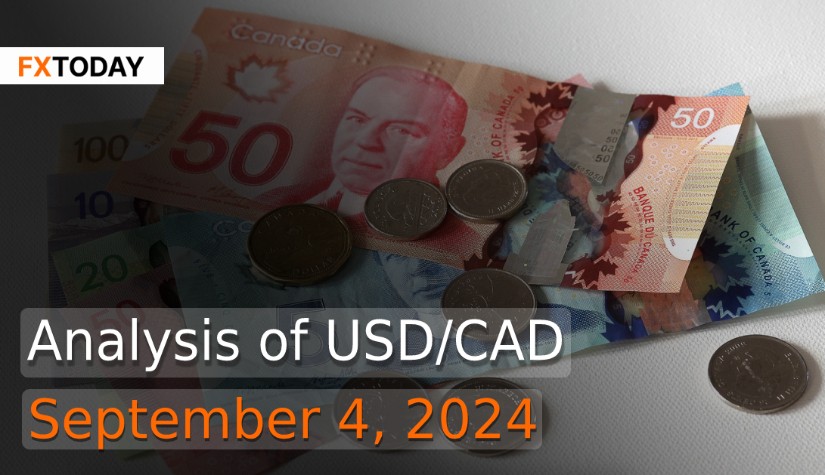BoC Expected to Cut Rates Amid Economic Weakness, Rising Unemployment, and Falling Inflation
BofA Global Research forecasts that the Bank of Canada (BoC) will cut its overnight rate target by 25 basis points to 4.25% on September 4, driven by persistent economic challenges, including rising unemployment and a steady decline in inflation. This anticipated cut aligns with the trend of softening economic indicators, and BofA projects the rate will decrease further to 3.75% by the end of 2024 and to 3.0% by the end of 2025.
The Canadian economy's fragility is underscored by modest month-over-month GDP growth of 0.2% in May and an estimated 0.1% in June, while retail sales in June declined by 0.3%. A preliminary estimate suggests a 0.6% rebound in retail sales for July.
BofA Global Research anticipates that Canada’s GDP grew by 2.0% on a seasonally adjusted annual rate in the second quarter, indicating a sluggish overall economy. Second-quarter growth was primarily driven by increased government spending, higher business investment, and greater consumer spending on services. However, on a per capita basis, GDP has contracted for five consecutive quarters, reflecting the broader economic slowdown under the strain of high interest rates.
The labor market also shows signs of strain, with employment declining for the second consecutive month in July and wage growth slowing. While full-time employment increased in July, a drop in part-time jobs suggests shifting employment trends.
Inflation continues to ease, with headline inflation falling to 2.5% year-over-year in July, down from 2.7%, and core inflation also declining to 2.6% from 2.8%. The slowdown in services inflation, particularly in shelter costs, supports the BoC’s stance as Governor Tiff Macklem has previously indicated that easing inflation could lead to further rate reductions. Financial markets now assign an 80% probability of a 25 basis point cut on September 4, up from 77% before the data release, and anticipate two additional cuts later in the year.
Canadian manufacturing activity edged closer to stabilization in August, as declines in production and new orders slowed, but the sector remained in contraction for the 16th consecutive month with the PMI at 49.5, the longest such stretch since 2010. However, the employment index fell to its lowest level this year at 48.8, down from 50.3, highlighting ongoing challenges and uncertainties in the sector.
In the retail sector, Canadian sales fell by 0.3% in June as high interest rates pressured consumers, reducing spending on vehicles, personal care products, and sporting goods.
In the housing market, Canadian home prices are expected to see minimal growth in 2024, rising modestly in subsequent years. Despite a series of interest rate cuts, affordability remains strained. Home prices, which have declined by only 14% from their peak after a nearly 55% surge during the pandemic, are projected to increase by about 1% in 2024, lagging behind overall inflation, which is expected to be 2.5% this year.
Housing affordability is at its worst since 1990, but the supply side is showing improvement, with a 16% increase in housing starts in July. However, ongoing challenges, such as weak demand and upcoming mortgage renewals, may keep price gains limited. While more supply could enter the market as homeowners adjust to higher borrowing costs, significant improvements in affordability for first-time buyers remain uncertain.
The U.S. dollar hit a two-week high as investors brace for key economic data, including the U.S. payrolls report on Friday, which is expected to significantly influence the Federal Reserve's September 18 decision. Currently, there's a 63% chance of a 25 basis point cut and a 37% chance of a 50 basis point cut, with a total of 100 basis points in cuts anticipated for the year.
However, amid a broader sell-off in stocks and riskier currencies, the dollar benefited as a safe-haven asset, with traders increasingly concerned about the U.S. economy and the likelihood of a hard landing.
The U.S. manufacturing sector contracted in August, with the ISM PMI rising slightly to 47.2 but remaining below the 50 threshold for the fifth consecutive month. While employment showed some improvement, declines in new orders and rising inventories suggest continued subdued factory activity.
U.S. construction spending fell more than expected in July, driven by declines in private and residential construction. Single-family homebuilding hit a 16-month low due to high mortgage rates and excess supply, with overall residential investment contracting in Q2.
Housing inflation in the U.S. is projected to ease as the supply-demand gap narrows, which could add downward pressure on overall inflation, according to the Federal Reserve Bank of San Francisco. Shelter inflation, which has significantly contributed to price pressures, is expected to decline towards 2% by year-end before stabilizing near its pre-pandemic average of 3.3%.
In the foreign exchange market, the Canadian dollar is currently seen as fairly valued against the U.S. dollar, and the upcoming BoC decision is not expected to significantly impact the currency pair. This could cause the Canadian dollar to continue fluctuating within a broad range and potentially weaken further due to the differences in yields between the two countries.
Data for Technical Analysis (1H) CFD USD/CAD
Resistance : 1.3546, 1.3550, 1.3556
Support : 1.3534, 1.3530, 1.3524
1H Outlook
Source: TradingView
Buy/Long 1 If the support at the price range 1.3524 - 1.3534 is touched, but the support at 1.3534 cannot be broken, the TP may be set around 1.3547 and the SL around 1.3519, or up to the risk appetite.
Buy/Long 2 If the resistance can be broken at the price range of 1.3546 - 1.3551, TP may be set around 1.3564 and SL around 1.3529, or up to the risk appetite.
Sell/Short 1 If the resistance at the price range 1.3546 - 1.3551 is touched, but the resistance 1.3546 cannot be broken, the TP may be set around 1.3531 and the SL around 1.3556, or up to the risk appetite.
Sell/Short 2 If the support can be broken at the price range of 1.3524 - 1.3534, TP may be set around 1.3514 and SL around 1.3551, or up to the risk appetite.
Pivot Points Sep 4, 2024 03:00AM GMT
|
Name
|
S3
|
S2
|
S1
|
Pivot Points
|
R1
|
R2
|
R3
|
|---|---|---|---|---|---|---|---|
| Classic | 1.3514 | 1.3524 | 1.3531 | 1.354 | 1.3547 | 1.3556 | 1.3564 |
| Fibonacci | 1.3524 | 1.353 | 1.3534 | 1.354 | 1.3546 | 1.355 | 1.3556 |
| Camarilla | 1.3534 | 1.3535 | 1.3537 | 1.354 | 1.354 | 1.3542 | 1.3543 |
| Woodie's | 1.3514 | 1.3524 | 1.3531 | 1.354 | 1.3547 | 1.3556 | 1.3564 |
| DeMark's | - | - | 1.3528 | 1.3538 | 1.3544 | - | - |
Sources: Investing 1, Investing 2
















